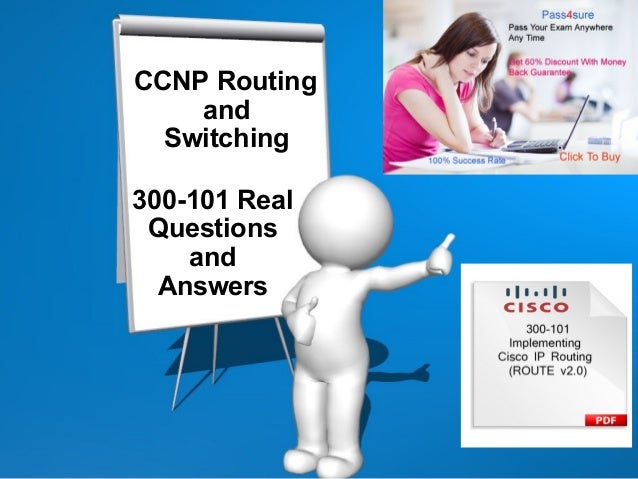Distance-Vector
A distance-vector routing protocol sends a full copy of its routing table to its directly attached neighbors. This is a periodic advertisement, meaning that even if there have been no topological changes, a distance-vector routing protocol will, at regular intervals, readvertise its full routing table to its neighbors.
Obviously, this periodic advertisement of redundant information is inefficient. Ideally, you want a full exchange of route information to occur only once and subsequent
updates to be triggered by topological changes.
Another drawback to distance-vector routing protocols is the time they take to converge, which is the time required for all routers to update their routing table in response to a topological change in a network. Hold-down timers can speed the convergence process.
After a router makes a change to a route entry, a hold-down timer prevents any subsequent updates for a specified period of time. This approach helps stop flapping routes
(which are routes that oscillate between being available and unavailable) from preventing convergence.
Yet another issue with distance-vector routing protocols is the potential of a routing loop. To illustrate, consider Figure 1-5 . In this topology, the metric being used is hop count , which is the number of routers that must be crossed to reach a network. As one example, Router R3’s routing table has a route entry for network 10.1.1.0 /24 available off of Router R1. For Router R3 to reach that network, two routers must be transited (Routers R2 and R1). As a result, network 10.1.1.0 /24 appears in Router R3’s routing table with a metric (hop count) of 2.

Figure 1-5 Routing Loop: Before Link Failure
Continuing with the example, imagine that interface Ethernet 1/0 on Router R3 goes down. As shown in Figure 1-6 , Router R3 loses its directly connected route (with a metric of 0) to network 10.1.4.0 /24; however, Router R2 had a route to 10.1.4.0 /24 in its routing table (with a metric of 1), and this route was advertised to Router R3. Router R3 adds this entry for 10.1.4.0 to its routing table and increments the metric by 1.

Figure 1-6 Routing Loop: After Link Failure
The problem with this scenario is that the 10.1.4.0 /24 entry in Router R2’s routing table was because of an advertisement that Router R2 received from Router R3. Now, Router R3 is relying on that route, which is no longer valid. The routing loop continues as Router R3 advertises its newly learned route of 10.1.4.0 /24 with a metric of 2 to its neighbor, Router R2. Because Router R2 originally learned the 10.1.4.0 /24 network from Router R3, when it sees Router R3 advertising that same route with a metric of 2, the network gets updated in Router R2’s routing table to have a metric of 3, as shown in Figure 1-7 .

Figure 1-7 Routing Loop: Routers R2 and R3 Incrementing the Metric for 10.1.4.0 /24
The metric for the 10.1.4.0 /24 network continues to increment in the routing tables for both Routers R2 and R3, until the metric reaches a value considered to be an unreachable value (for example, 16 in the case of RIP). This process is referred to as a routing loop . Distance-vector routing protocols typically use one of two approaches for preventing routing loops:
- Split Horizon: The Split Horizon feature prevents a route learned on one interface from being advertised back out of that same interface.
- Poison Reverse: The Poison Reverse feature causes a route received on one interface to be advertised back out of that same interface with a metric considered to be infinite. Having either approach applied to the previous example would have prevented Router R3 from adding the 10.1.4.0 /24 network into its routing table based on an advertisement from Router R2. Routing protocols falling under the distance-vector category include
- Routing Information Protocol (RIP): A distance-vector routing protocol that uses a metric of hop count. The maximum number of hops between two routers in an RIPbased network is 15. Therefore, a hop count of 16 is considered to be infinite. Also, RIP is an IGP. Three primary versions of RIP exist. RIPv1 periodically broadcasts its entire IP routing table, and it supports only fixed-length subnet masks. RIPv2 supports variable-length subnet masks, and it uses multicasts (to a multicast address of 224.0.0.9) to advertise its IP routing table, as opposed to broadcasts. RIP next generation (RIPng) supports the routing of IPv6 networks, while RIPv1 and RIPv2 support the routing of IPv4 networks.
- Enhanced Interior Gateway Routing Protocol (EIGRP): A Cisco-proprietary protocol until early 2013, EIGRP has been popular in Cisco-only networks; however, other vendors can now implement EIGRP on their routers.
EIGRP is classified as an advanced distance-vector routing protocol , because it improves on the fundamental characteristics of a distance-vector routing protocol. For example, EIGRP does not periodically send out its entire IP routing table to its neighbors. Instead it uses triggered updates, and it converges quickly. Also, EIGRP can support multiple routed protocols (for example, IPv4 and IPv6). EIGRP can even advertise network services (for example, route plan information for a unified communications network) using the Cisco Service Advertisement Framework (SAF) .
By default, EIGRP uses bandwidth and delay in its metric calculation; however, other parameters can be considered. These optional parameters include reliability, load, and maximum transmission unit (MTU) size. The algorithm EIGRP uses for its route selection is not Dijkstra’s Shortest Path First algorithm (as used by OSPF). Instead, EIGRP uses Diffusing Update Algorithm (DUAL) .
Link-State
Rather than having neighboring routers exchange their full routing tables with one another, a link-state routing protocol allows routers to build a topological map of a network. Then, similar to a global positioning system (GPS) in a car, a router can execute an algorithm to calculate an optimal path (or paths) to a destination network.
Routers send link-state advertisements (LSA) to advertise the networks they know how to reach. Routers then use those LSAs to construct the topological map of a network. The algorithm run against this topological map is Dijkstra’s Shortest Path First algorithm.
Unlike distance-vector routing protocols, link-state routing protocols exchange full routing information only when two routers initially form their adjacency. Then, routing
updates are sent in response to changes in the network, as opposed to being sent periodically. Also, link-state routing protocols benefit from shorter convergence times, as compared to distance-vector routing protocols (although convergence times are comparable to EIGRP).
Routing protocols that can be categorized as link-state routing protocols include
- Open Shortest Path First (OSPF): A link-state routing protocol that uses a metric of cost, which is based on the link speed between two routers. OSPF is a popular IGP,
- because of its scalability, fast convergence, and vendor interoperability.
- Intermediate System–to–Intermediate System (IS-IS): This link-state routing protocol is similar in its operation to OSPF. It uses a configurable, yet dimensionless,
- metric associated with an interface and runs Dijkstra’s Shortest Path First algorithm.
Although using IS-IS as an IGP offers the scalability, fast convergence, and vendor interoperability benefits of OSPF, it has not been as widely deployed as OSPF.

































